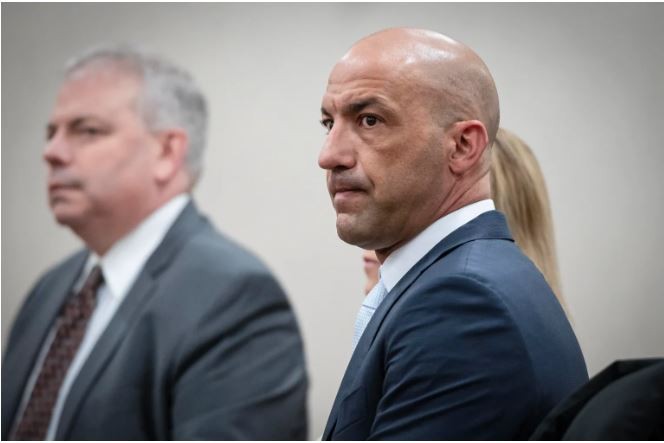AUDITS AND INVENTORIES:
Reprinted From The Evidence Log an IAPE Publication for Members
Volume 1993, Number 3, Page 3
PROVIDING INTEGRITY WITHIN THE PROPERTY SYSTEM
by Robin Lynn Trench
"Objection your honor! No evidence containing the fingerprint in question has been produced."
"Since the District Attorney has not been able to produce the evidence in question, I have no choice but to dismiss this case." The gavel falls, the case is dismissed, the guilty walks free all because one piece of critical evidence was lost in the depths of a law enforcement property room.
The public has a right to rely with confidence on the integrity and efficiency of all functions performed by law enforcement agencies. They have the right to believe that justice will be based on a jury's verdict not on a technicality of law. One of the most overlooked areas of handling law enforcement held property and evidence is the inventory and audit responsibilities. Over the past few years law enforcement agencies have developed a greater concern for the integrity of property and evidence. Agencies have begun to recognize that the consequences of mismanagement of property/evidence can lead to agency embarrassment, lost court cases, loss of public confidence and financial loss. Mismanagement can be avoided through adherence to statutory requirements supported by good supervisory and management practices.
Most Property personnel fear the arrival of an audit or inventory. The fear is based on the belief that an audit/inventory is set-up to point out the failures of the system. They believe that the failures will be translated as personal failures of an individual. Actually an audit is intended to strengthen internal security, to adjust for legislative changes effecting the process and provide support for procedures set up within each property/evidence section.
Organizational considerations play a major role in good audit procedures. Centralizing the storage and control of property is the first step. The property function should be in the administrative or support services bureau division or section. When property is part of the investigative or patrol divisions conflicts can occur. Sometimes the integrity of the property system is sacrificed when viewed as "secondary" to a patrol need. Employees assigned to the property unit should ordinarily be para-professionals and not peace officers. Use of para-professionals provide the best use of training at a cost efficient rate.
The unit should be staffed with personnel who are not involved in field operations. Personnel involved in collection of evidence should not be involved with the storage of evidence. Only the minimum number of employees necessary to perform the property function should have access to the property storage facilities. Line officers, supervisors and general management personnel do not need access to the property facility. Permitting unessential personnel access is creating a potential time bomb for litigation and lost court cases. Limiting access and personnel simplifies control procedures and enhances the integrity of the system.
An Audit is an official examination and verification of accounts and records. It is intended to control and verify the integrity of the documentation and handling of property. An audit identifies weaknesses by providing information necessary to take corrective action. An audit assures compliance with existing laws, regulations, policies and common practices. An audit improves the performance and integrity of the property and evidence procedures.
There are three basic types of audits your basic, procedural and organizational. A basic audit is an examination to determine if legal requirements have been complied with. A procedural audit examines and evaluates the efficiency and effective use of resources including adherence to procedures and policies established by management. An organizational audit examines and evaluates an agency's organizational structure including plans, policies and systems.
Audits can be conducted by Property Officers, Property Supervisors, Management, or external personnel (ie: City Auditors, Commissions on Peace Officers Standards of Training, etc.). There are no set time frames for conducting audits. However, periodic inspections and audits should be planned and scheduled on a periodic basis to assure the review of critical area. A good baseline would be auditing on a yearly basis. Problem areas or high security items such as narcotics require more frequent audits. Random unannounced audits of selected problem areas help to round out a solid approach to maintaining the integrity of the property system.
Changes in law can create potential liability for agencies and their employees. An annual review of the written property policy and an on-site inspection can significantly reduce liability created by outdated policies. Occasional "spot" inspections of work areas often result in a reduction of potential workers compensation injuries.
Collection of documentation is not as complicated as it sounds. Documenting an audit usually involves the creation of flow charts, data collection, and data analysis. Maintaining strong documentation of the audit process is integral to the success of any audit process. While computers are helpful for storing records a printed 8 1/2" x 11" copy should be maintained in a file. The file should contain all records, notes, support documentation, problem areas, flow charts, and corrective measures involving the audit process. The documentation should be a resource for background and reference for future audit planning.
Flowcharts provide a clear picture of how the property system is operating. It may reveal duplicate efforts, bottlenecks, unnecessary tasks or repetitive duties. Flowcharts provide a common ground for improvement. They serve as an aid in training of personnel, demonstrate strengths and weakness of a system and identify inefficiency in processing evidence.
Data collection is the process of identifying every unit, division, or person involved in the property system operation including the specific procedural steps used. Data that will prove helpful during an audit includes:
* time required to process a specific task;
* the volume of evidence and transactions processed during a specific time;
* the number of employees performing the task;
* number of duplicate or identical tasks performed;
* average length of time an item is stored prior to disposal.
Data Analysis uses the collected data to determine areas of improvement. Analysis breakdowns should include:
* Is a specific task needed? If so why?
* Why is a task done at a particular location or at a particular time ?
* Why is a task done by a specific person or in a specific way?
Data analysis provides for consolidation or expansion of tasks. Analysis leads to increases in the efficiency and safety of a property system. Computerized and automated systems speed up the rate at which information can be collected but should never be allowed to effect the standards of an audit. Analysis may involve tracing items "through" the computer as well as "around" the computer. Auditing a computerized system involves auditing both the computer-based processing and any manual processing activities.
A full audit would involve tracing every item through the system to the current location, verifying the chain of custody, and accuracy of all related forms. However, full audits take a tremendous amount of time and require the virtual shut down of the property system. A full audit can take months to complete.
More common is the use of random audits. One method is the selection of an active case file. The auditor would trace the file through the entire system to the current location of the property. This method includes verification of the file, the accuracy of all required forms to insure an accurate reflection of current property status.
A second method would be the random selection of an item of property. The auditor would trace it back through the case file verifying the file and all required forms accurately reflect the status of the property.
A third random audit method involves the selection of an inactive case file. The file would be traced through the system to the property, or if the property has been purged, verifying that all the reports and forms accurately reflect the disposition of the property. An inspection of the last known storage location prior to disposal is recommended to assure the validity of the records.
Audits are a complete review of the property system as a whole. An inventory is a simpler examination to verify description, quantity and location of the property. During an inventory the property report (card, form, sheet, etc.) is verified against the description on the item and the current location. Comparisons of evidence descriptions and quantity should be handled during the evidence intake process. A review of the location, descriptions and quantities during a random inventory becomes the initial indicator of any potential problems within the system.
There are three standard methods used for random inventories. The first method is selecting a property record/sheet from the property room file and verifying the accuracy of the description, quantity and location of the property. The second method is selecting an active case file from records and verifying the accuracy of the report and required forms by verifying the description, quantity and location of the property. The third method is selecting an item of evidence from the shelf and comparing the listed description and quantity to the property sheet.
While audits and inventories are part of a standardized operation there are a few areas of consideration. Comparisons of the listed descriptions do not always address the internal contents. As long as the evidence seal is intact the property system is basically removed from suspicion. If property seals are broken to verify the contents, the package should always be resealed. The new seal should be initialed and dated. A witness should be present and initial the seal also. Take particular note of narcotics destructions. An inventory of the narcotics should include random testing to assure that the "narcotic" is still a narcotic and not a substitute. Testing random samples of narcotics especially during the destruction phase is critical to maintaining the integrity of an audit within the property system.
While no one ever likes to be the subject of an audit, assurances should be given that the audit is of the system not the person. If the audit uncovers more than a procedural problem it becomes an internal affairs matter. Let the IA team do the job they were hired to do. The overwhelming majority of property room audits will result in an improved property system that will help honest people complete a demanding job.
During an audit attitude is everything. Data analysis can be used a lot of ways. One way is to find areas of recognition. If the data indicates a more efficient way to do something take time to recognize the excessive workload someone handled prior to implementing the change. Taking time to say thank you creates a positive atmosphere. Change is always easier to accept with a positive outlook.
Find the positive throughout the process. With the right leadership, an audit can become an opportunity for considering new concepts, better ideas and empower property personnel to actively participate in positive changes of their own working environment!
Copyright © 1993 International Association for Property and Evidence
"Law Enforcement Serving the Needs of Law Enforcement"


